
Exploration Technologies, Inc.
Environmental Studies


The Exploration Technologies, Inc. (ETI) staff of geoscientists has extensive experience in the research, development, execution and interpretation of various geochemical techniques utilized in environmental studies, petroleum and minerals exploration. ETI possesses a wide range of capabilities to perform all phases of environmental site assessments involving natural and refined petroleum product surface and subsurface contamination. Surface geochemical surveys are utilized by ETI to delineate the horizontal extent of subsurface contamination in soils and/or groundwater. The vertical extent of contamination is subsequently determined using ETI's real-time on-site screening laboratories during borehole drilling operations, thus allowing for a three-dimensional interpretation of the contamination present. These techniques, used in tandem, can provide a very cost-effective accurate evaluation of the subject property while reducing the risk of errors and omissions during the assessment phase. From the fully equipped and experienced crews to the highly qualified laboratory personnel, ETI is dedicated to making the best possible interpretation on which clients can base their environmental decision.
ETI has completed many environmental surveys and has been used successfully as an expert witness in many court cases.
Learn More
Published Papers
Environmental Services
Exploration Technologies, Inc. (ETI) has been successfully executing soil gas geochemical surveys since 1984. These surveys are very effective in determining the nature and horizontal extent of subsurface hydrocarbon contamination. Our soil gas collection and sample analysis techniques are capable of delineating sorbed, dissolved and liquid phase hydrocarbon contaminants present in near surface soils and/or groundwater. This technology has been used in areas underlain by sandy, silty and clay rich soils. The sensitivity of the analyses is not significantly affected by highly argillaceous soils typical of the Gulf Coast region. Soil gas geochemistry is very accurate and effective when used properly.
All vapor samples are extracted from soils and collected through a specially designed sampling probe into evacuated 125 cc septum top glass bottles. Soil vapor samples are analyzed in ETI 's Houston, Texas laboratory by flame ionization detector (FID) gas chromatography to determine C1-C4 (methane, ethane, ethylene, propane, propylene and butanes) and C5+ (pentane-xylenes+) hydrocarbon concentrations, in order to characterize and quantify the petroleum hydrocarbon contaminants present. Samples are analyzed for chlorinated hydrocarbons using a dual detector gas chromatograph equipped with an electron capture detector (ECD) and flame ionization detector (FID).
All vapor samples are extracted from soils and collected through a specially designed sampling probe into evacuated 125 cc septum top glass bottles. Soil vapor samples are analyzed in ETI 's Houston, Texas laboratory by flame ionization detector (FID) gas chromatography to determine C1-C4 (methane, ethane, ethylene, propane, propylene and butanes) and C5+ (pentane-xylenes+) hydrocarbon concentrations, in order to characterize and quantify the petroleum hydrocarbon contaminants present. Samples are analyzed for chlorinated hydrocarbons using a dual detector gas chromatograph equipped with an electron capture detector (ECD) and flame ionization detector (FID).
Learn More

SOIL GAS STUDIES
Exploration Technologies, Inc. (ETI) has been successfully executing soil gas geochemical surveys since 1984. These surveys are very effective in determining the nature and horizontal extent of subsurface hydrocarbon contamination. Our soil gas collection and sample analysis techniques are capable of delineating sorbed, dissolved and liquid phase hydrocarbon contaminants present in near surface soils and/or groundwater. This technology has been used in areas underlain by sandy, silty and clay rich soils. The sensitivity of the analyses is not significantly affected by highly argillaceous soils typical of the Gulf Coast region. Soil gas geochemistry is very accurate and effective when used properly.
All vapor samples are extracted from soils and collected through a specially designed sampling probe into evacuated 125 cc septum top glass bottles. Soil vapor samples are analyzed in ETI 's Houston, Texas laboratory by flame ionization detector (FID) gas chromatography to determine C1-C4 (methane, ethane, ethylene, propane, propylene and butanes) and C5+ (pentane-xylenes+) hydrocarbon concentrations, in order to characterize and quantify the petroleum hydrocarbon contaminants present. Samples are analyzed for chlorinated hydrocarbons using a dual detector gas chromatograph equipped with an electron capture detector (ECD) and flame ionization detector (FID).
All vapor samples are extracted from soils and collected through a specially designed sampling probe into evacuated 125 cc septum top glass bottles. Soil vapor samples are analyzed in ETI 's Houston, Texas laboratory by flame ionization detector (FID) gas chromatography to determine C1-C4 (methane, ethane, ethylene, propane, propylene and butanes) and C5+ (pentane-xylenes+) hydrocarbon concentrations, in order to characterize and quantify the petroleum hydrocarbon contaminants present. Samples are analyzed for chlorinated hydrocarbons using a dual detector gas chromatograph equipped with an electron capture detector (ECD) and flame ionization detector (FID).
Phase II Site Assessments - Learn More

LIGHT HYDROCARBON ANALYSES
Light hydrocarbon analyses (C1-C4) measure the lightest, most volatile compounds present in natural gas and other petroleum based products. These light hydrocarbon compounds tend to dissipate rapidly with time and/or distance from the point(s) at which petroleum products are introduced into the subsurface environment. The light hydrocarbon analyses allow for the identification and differentiation of natural gas leaks, biogenic methane and refined petroleum product contaminants. Light hydrocarbon compound analyses are also utilized to determine areas of natural gas leakage spills, the presence of gas seepage from deep seated oil and gas reservoirs and/or the leakage from oil and gas well casings.
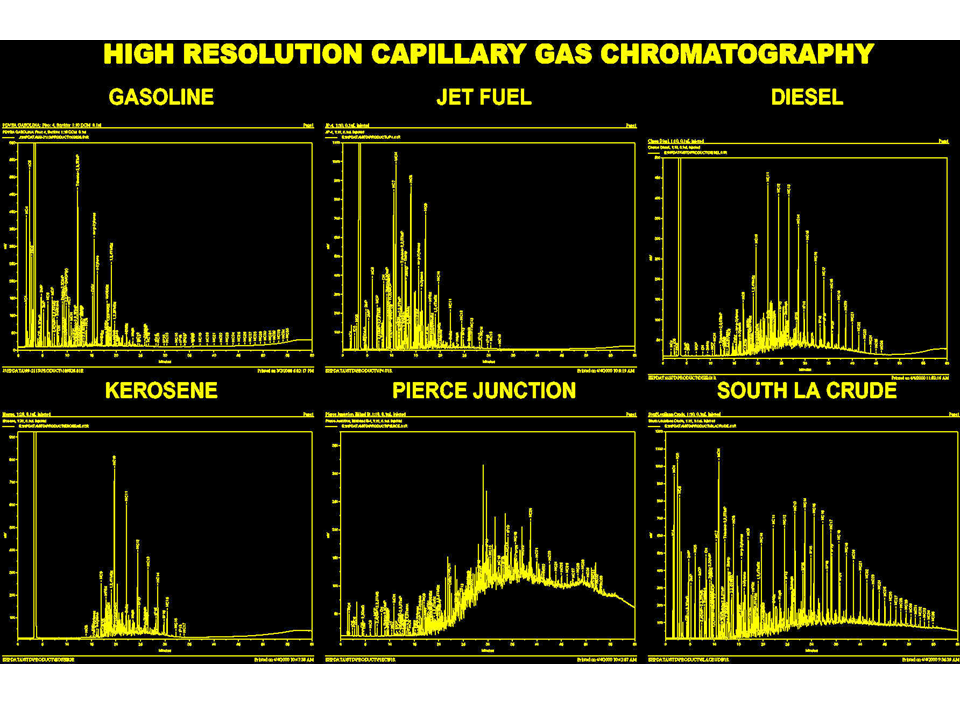
HIGH RESOLUTION GC C5+ (PENTANE-XYLENES) HYDROCARBON ANALYSES/SOIL VAPOR AND/OR WATER
C5+ (pentane-xylenes+) hydrocarbons analyses yield a quantitative measure of the actual volume of "gasoline type " vapors present in near surface soils and/or water. Gasoline range hydrocarbons dissipate more slowly than the lighter fraction (C1-C4) compounds. If specific BTEX analyses are required, a FID equipped with a capillary column is used to quantify benzene, toluene, ethylbenzene, m &p-xylene and o-xylene aromatic hydrocarbons.
ANALYSIS FOR FIXED GAS (CO2, O2, N2)

If petroleum and/or chlorinated hydrocarbon products are present in subsurface soils or groundwater for a period of time, significant biodegradation of the hydrocarbon compounds occurs. The degradation of hydrocarbon compounds by aerobic and anaerobic bacteria generate significant concentrations of carbon dioxide and methane, respectively, in the subsurface environment. The biodegradation of hydrocarbons by both aerobic and anaerobic bacteria can occur within very close proximity in nature, and can yield elevated concentrations of both carbon dioxide and methane in the subsurface environment. These biochemical reactions are quite common in soils and groundwater containing products such as gasoline, diesel, chlorinated solvents, etc. since such products are excellent food sources for the indigenous bacteria. Carbon dioxide analyses, as well as oxygen and nitrogen, are also performed using a gas chromatograph equipped with a thermal conductivity detector (TCD). The results of these analyses used in tandem with the petroleum and chlorinated hydrocarbon analyses aid in the delineation of the subsurface contaminant plume(s).
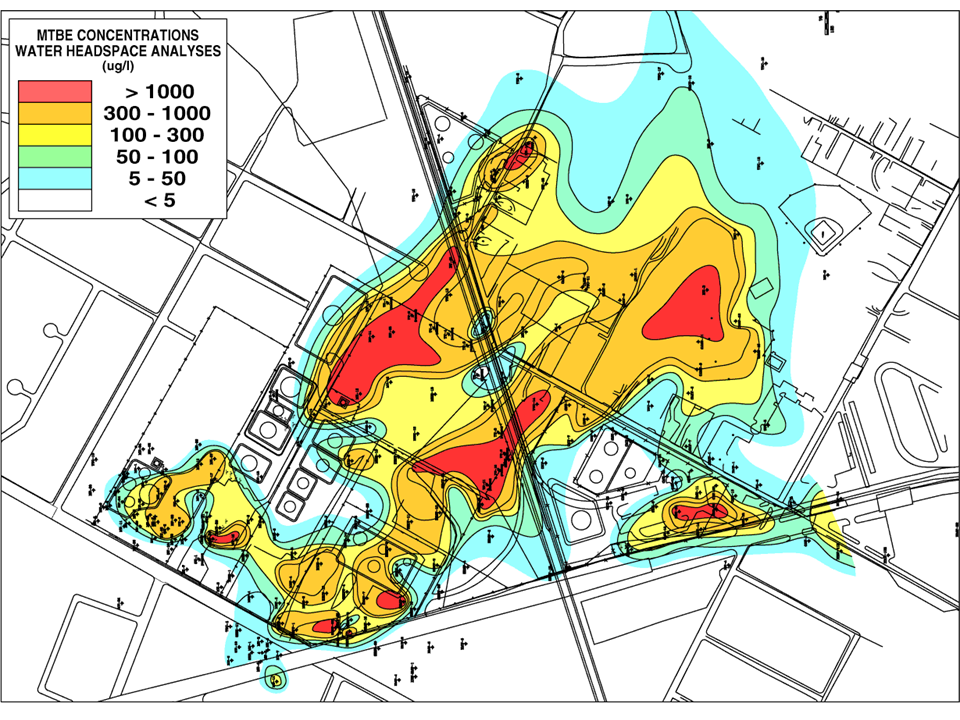
CHLORINATED HYDROCARBONS
Soil gas assessments for chlorinated hydrocarbons include analyses for PCE, DCE, TCE, vinyl chloride and other chlorinated solvents using a dual detector gas chromatograph equipped with an electron capture detector (ECD) and flame ionization detector (FID). The instrument is excellent for quantifying various chlorinated solvents, and their daughter products, commonly found in subsurface soils and groundwater. Light (C1-C4) hydrocarbon analyses also provide valuable information when used in tandem with chlorinated hydrocarbon constituent analyses. Elevated concentrations of ethylene (ethene) and ethane (and methane), in areas where elevated concentrations of chlorinated hydrocarbon compounds are present, are indicative of anaerobic biodegradation of chlorinated solvents. Most chlorinated solvents contain either ethane or ethene in their molecular structures, and these more volatile compounds are very helpful in delineating the full areal extent of the subsurface contamination.
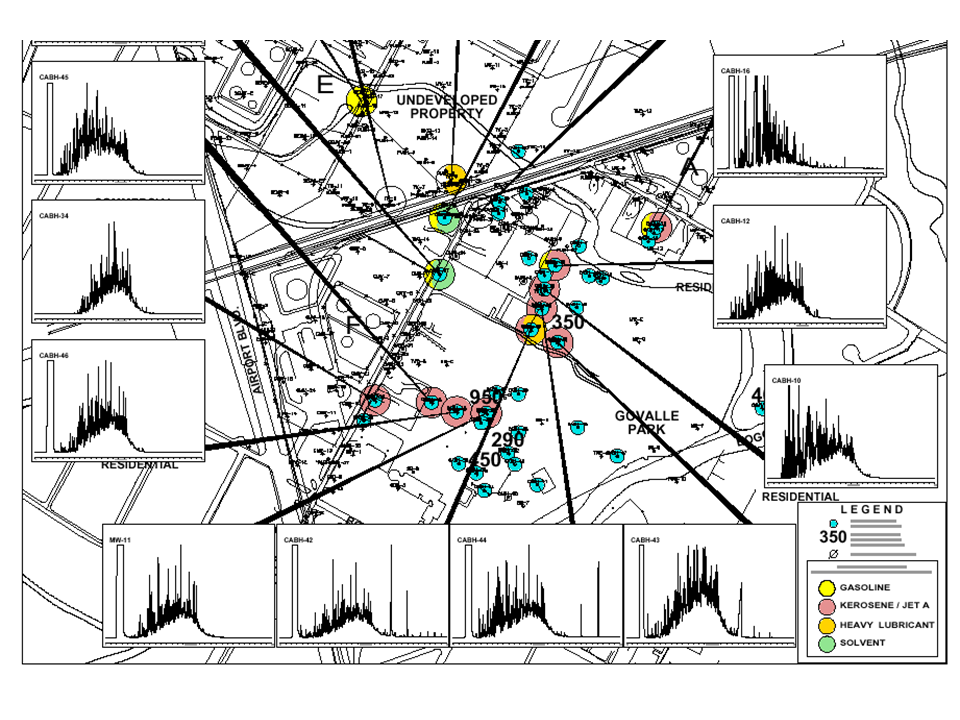
MAPPING AND INTERPRETATION
Contaminant plume maps are routinely constructed for a variety of hydrocarbon constituents. These plume maps are used by ETI personnel to identify the source(s) and possible migration pathways of contaminants. Hydrocarbon compound ratios and chromatograms are utilized to define distinct plumes resulting from different sources, to delineate plumes resulting from the commingling of two or more products and/or the matching of liquid products with soil gas sample data. The component ratios and chromatographic signatures can also be used to delineate areas where the contamination is a result of either recent or old product releases and to provide some evidence of aging where the contamination is due to the weathering of a product lost in the past. The soil gas studies conducted by ETI are invaluable in determining the horizontal extent of contaminant plumes in the subsurface environment. Soil gas plume maps can be utilized to determine the locations at which boreholes and/or monitoring wells should be placed. The use of these soil gas maps can eliminate "random "drilling and supplement the data acquired from soil sample analyses. The information obtained during the performance of a soil vapor survey is extremely cost-effective since the density of the data collected greatly exceeds that achieved through borehole and/or monitor well drilling. In addition, fewer boreholes/monitor wells are required to delineate the vertical extent of contamination after using the soil gas plume maps as a "drilling guide".

HIGH RESOLUTION GC OF PRODUCT AND SOIL EXTRACTS
High resolution detailed fingerprints are utilized to correlate product accumulations with source of contamination and areal distribution of vapor and dissolved phase constituents in soil and water. High resolution GC of hydrocarbon extracts from soil provides delineation of the areal and vertical extent and type product contamination. These analyses are available with individual component quantification.
Learn More
Product Migration

-
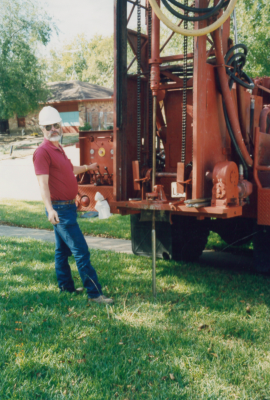 Dissolve PhaseDissolved phase contamination in ground water only contains approximately 5% of the total mass of a petroleum fuel hydrocarbon spill
Dissolve PhaseDissolved phase contamination in ground water only contains approximately 5% of the total mass of a petroleum fuel hydrocarbon spill -
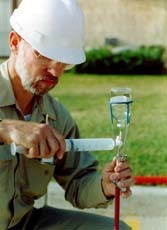 Vapor PhaseVapor phase contamination generally has the largest volumetric distribution, is close to the surface, is a recognized exposure pathway, and is the most cost-effective stage of environmental assessments.
Vapor PhaseVapor phase contamination generally has the largest volumetric distribution, is close to the surface, is a recognized exposure pathway, and is the most cost-effective stage of environmental assessments. -
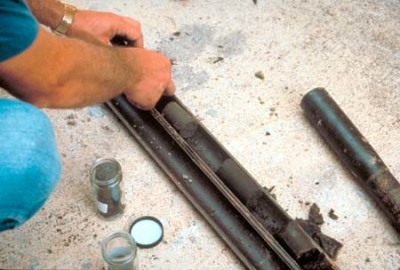 Residual PhaseResidual phase contamination in soils will act as a continuous source of dissolved phase contamination regardless of natural attenuation in the aquifer
Residual PhaseResidual phase contamination in soils will act as a continuous source of dissolved phase contamination regardless of natural attenuation in the aquifer -
 Free PhaseFree phase contamination implies an advanced stage of petroleum fuel hydrocarbon contamination
Free PhaseFree phase contamination implies an advanced stage of petroleum fuel hydrocarbon contamination
Button
Button
Button
Button
About Us
A Leader in Geochemistry
Exploration Technologies, Inc. (ETI) provides innovative geochemical services. ETI's geochemical techniques are employed in the petroleum industry to reduce exploration risk and for accurate and cost-effective site characterizations. oil and gas exploration
High-Grade a Prospect
Use soil gas surveys to place seismic lines, and reduce the cost of your seismic surveys. oil and gas exploration
Save Money on Seismic
Use soil gas surveys to place seismic lines, and reduce the cost of your seismic surveys.
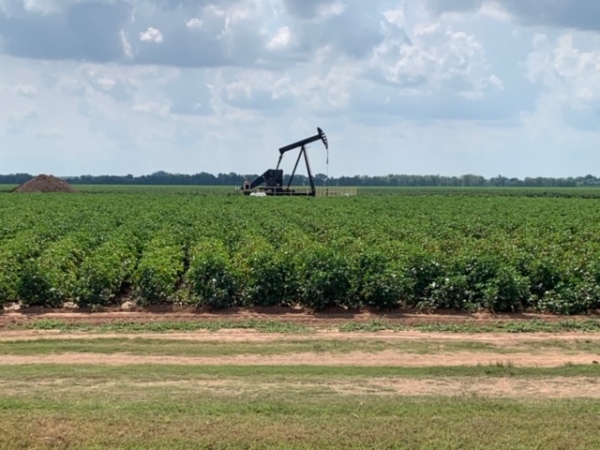
CONTACT INFO
Address:
Exploration Technologies, Inc.
7755 Synott Rd.
Houston, Texas, 77083
Houston, Texas, 77083
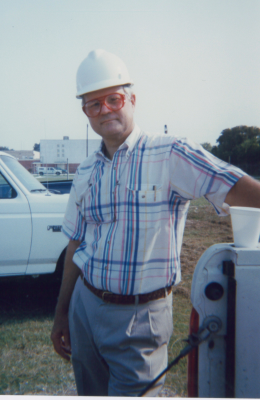
Telephone:
(281) 530-4300
Fax:
(281) 530-4308